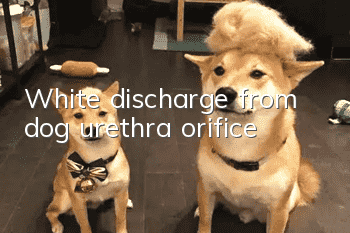How to choose a purebred American Eskimo dog

Netizens who have raised American Eskimo dogs should all know that American Eskimo dogs mainly originated from the European Pomeranian breed, and American Eskimo dogs were also called Pomeranians in the United States at the beginning. I don’t know why. In 1917, the name was changed to American Eskimo Dog. In the last century, American Eskimo Dog was a very thin and popular circus dog. People gave it the nickname Eskimo Dog. So how can you tell whether an Eskimo Dog is a purebred dog? What? The author also provides you with several methods on how to distinguish purebred American Eskimo dogs in terms of appearance.
[Body shape]
Size: American Eskimo Dogs come in three sizes (size refers to shoulder height): Toy, 9 inches to 12 inches (inclusive); Small, 12 inches to 15 inches (inclusive); Standard, 15 to 19 inches (including 19 inches). Within these three size ranges, there is no particular preference.
Disqualification: Under 9 inches or over 19 inches.
Proportion: Body length (the distance from the front of the shoulder blades to the end of the buttocks) is slightly greater than the height at the withers, with a ratio of approximately 1.1:1.
Physique: The American Eskimo Dog is strong and compact in structure, with sufficient bone mass.
[Head]
Expression: Keen, intelligent and alert.
Eyes: Not overly round, but slightly oval. The eyes are set widely apart and are not slanted, protruding or bulging. Tear stains, unless extremely severe, are not considered a fault. No more attention should be paid to tear stains than to type, structure, and temperament. Dark or medium brown eyes are preferred. The color of the eye rims is black or dark brown. Eyelashes are white.
Faults: Amber eyes or pink eye circles.
Disqualification: Blue eyes.
Ears: proportional to the size of the head, triangular in shape, slightly blunt at the tip, and kept upright. Set high and widely spaced, it blends gently into the head.
Skull: Slightly crowned, gently wedge-shaped, with maximum width between ears. The stop is well defined but not very steep.
Muzzle: Fairly broad, but never longer than the head, although it may be slightly shorter.
Nose: Pigmentation is black or dark brown. The lips are thin and tight, black or dark brown in color.
Faults: Pink nose or pink lips.
Jaw: Very strong, with neat and complete teeth. Scissor bite or pincer bite.
- What to do if your dog has double rows of teeth
- Things to note when feeding Teddy dogs
- Signs your dog loves you
- Common dog diseases in winter
- What are the symptoms of rabies in dogs?
- What are the symptoms of false pregnancy in dogs?
- Letting your dog walk upright is very harmful. Don’t let your ignorant interest ruin your dog’s life!
- What should I do if my dog has fleas? How to get rid of fleas on your dog?
- Why should a dog’s tail be docked? What are the reasons for docking a dog’s tail?
- What causes tear stains in dogs and how to improve them



